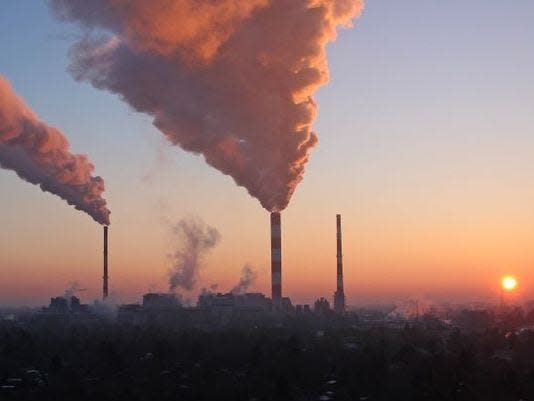Unpacking the price of our fossil fuel dependency | Biology

The Gulf of Mexico contains more than 14,000 abandoned oil and gas wells according to a study published in the journal Nature Energy two weeks ago.
Left uncapped, these wells can leak oil and methane gas. Some provide paths for salt water to intrude into nearby freshwater aquifers.
The study estimates the cost to cap, or “plug and abandon”, these wells at $30 billion.These findings put in sharp focus a major problem associated with our dependency on mining, transporting, and burning fossil fuels. How do we calculate the total cost of those activities and capture that cost in their price?
Stiffing taxpayers for $30 billion to fix the fossil fuel industry’s divots in the Gulf of Mexicohardly seems fair, especially given recent record high industry profits.
This is an obvious example of the sometimes-hidden costs of fossil fuel dependency not included in or “external” to their pricing calculations.

Burning fossil fuels emits carbon dioxide, a major greenhouse gas. Atmospheric carbon dioxide levels are rising abruptly and peaked last week at over 424 parts per million, the highest level recorded in over 800,000 years.
Mining and transporting methane gas, an even more potent greenhouse gas that can escape from uncapped wells and other facilities, exacerbates the fossil fuel-climate change dynamic. There has been a rash of examples of such “uncontrolled externalities” to the pricing of fossil fuel dependency lately.
More: Curbing the spread of COVID requires an understanding of evolution
Last weekend the U.S. Pacific Northwest and Southwest Canada experienced an unprecedented and early, record breaking “heat dome.” Temperatures in Portland, OR, and Seattle, WA, exceeded 90 degrees Fahrenheit.
Given that unseasonable heat, over 100 early season wildfires are burning in Alberta, Canada. An area three times that of Franklin County has burned. The wildfires have forced 30,000 people to flee their homes.
One week ago, Cyclone Mocha, a Category 5 storm that tied the record for the largest storm to ever occur in the North Indian Ocean, made landfall near the Bangladesh-Myanmar border. (Hurricane, cyclone, and typhoon describe the same phenomenon). Over 250,000 people, mainly Rohingya in refugee camps need food and shelter.
Last month, the global ocean hit a new, record high temperature. At the same time, the North American Atmospheric Administration (NOAA) predicts the probability of entering El Nino conditions later this year is greater than 90%. Coral reef bleaching and other destructive ocean heat wave events peak during El Nino. Lately, each subsequent El Nino has reached higher average ocean temperatures.
More: Higher ed bill might as well be called 'Make College Courses Boring Act.'| Biology
Climate change caused by fossil-fueled greenhouse gas emissions has not caused all of these events. But the ongoing increase of record-breaking climate events matches the increasing concentration of atmospheric greenhouse gases from fossil fuel use.
Compare these uncontrolled external costs of fossil fuels to those of renewable energy sources. Those sources and their infrastructure, e.g. solar panels, and batteries certainly have their environmental costs, but most of those are captured easily in their price.
Bottom line of energy cost-benefit comparisons: The energy sources for renewable energy— sunlight and wind — are free and don’t cause climate change when used to generate electricity. That’s not the case for fossil fuels.
Countries like Russia can weaponize their fossil fuel deliveries but can’t stop our sunlight and wind.
More: DeWine's greenwashing of natural gas as a 'green energy' source | Biology
Steve Rissing is professor emeritus in the Department of Evolution, Ecology, and Organismal Biology at Ohio State University. steverissing@hotmail.com.
This article originally appeared on The Columbus Dispatch: Renewable energy vs. fossil fuels?
